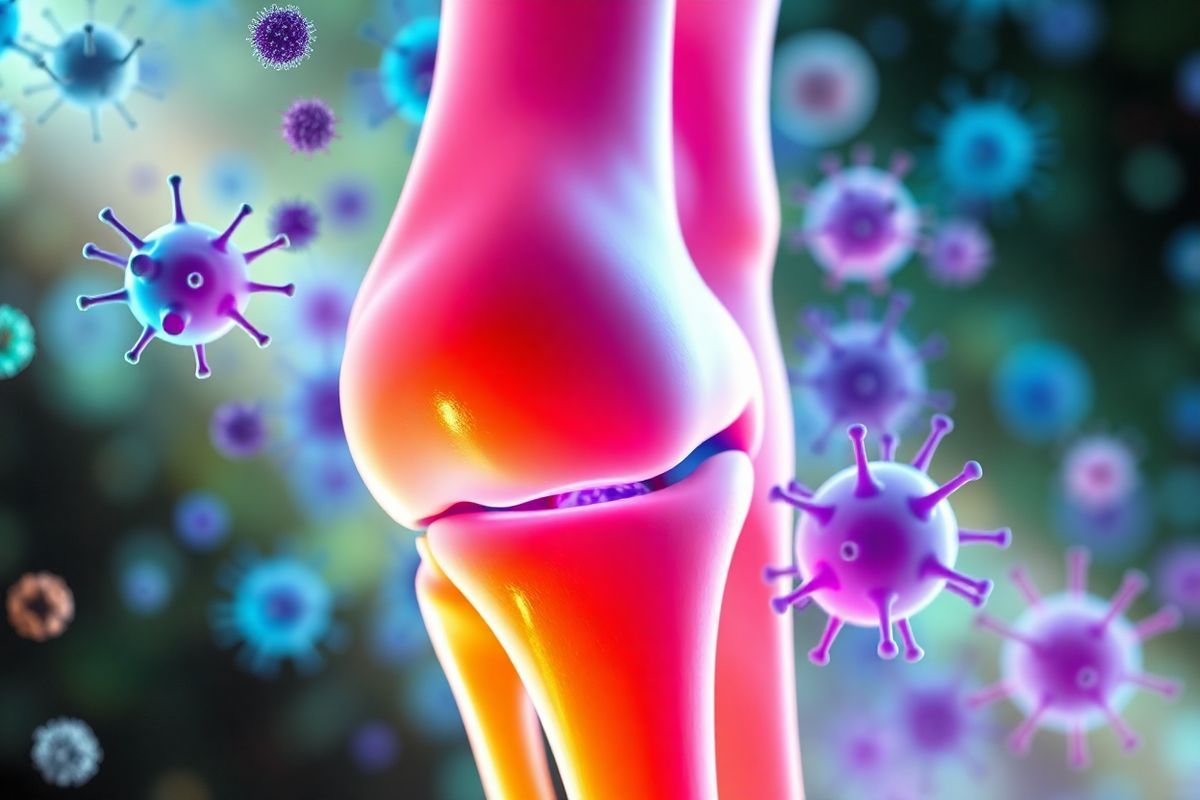Table of Contents
The Connection Between Hypersensitivity Reactions and Rheumatoid Arthritis

Hypersensitivity reactions play a significant role in the pathogenesis of rheumatoid arthritis. The immune response that characterizes RA can be viewed through the lens of hypersensitivity, where the body exhibits an exaggerated response to perceived threats, including self-antigens. In this context, hypersensitivity is not merely an allergic response but encompasses a broader range of immune dysfunctions.
There are four primary types of hypersensitivity reactions (Medical News Today, 2023):
- Type I: Immediate hypersensitivity, often linked to allergies, mediated by IgE antibodies. This type includes conditions such as allergic asthma and anaphylaxis.
- Type II: Cytotoxic reactions where antibodies target specific cells, leading to tissue damage. This is often seen in autoimmune diseases, including some forms of RA.
- Type III: Immune complex-mediated reactions, where antigen-antibody complexes precipitate inflammation, commonly observed in conditions like lupus and RA.
- Type IV: Delayed hypersensitivity reactions mediated by T cells, which can contribute to chronic inflammation in RA.
The link between RA and hypersensitivity is particularly evident in cases where environmental triggers, such as infections or exposure to certain drugs, lead to the initial immune response that later perpetuates the disease. Understanding this connection is crucial for developing effective therapeutic strategies to manage RA and its associated symptoms (Shah, 2023).
Common Symptoms of Rheumatoid Arthritis: Recognizing the Signs
Recognizing the symptoms of RA is vital for early diagnosis and management. Common symptoms include:
- Joint Pain and Swelling: Pain typically arises in symmetrical pairs of joints, with the small joints of the hands and feet affected first. Swelling may occur due to synovial inflammation.
- Morning Stiffness: Patients often experience stiffness in the morning that can last from 30 minutes to several hours, improving throughout the day with movement.
- Fatigue: Many individuals with RA report ongoing fatigue and a general sense of malaise, often exacerbated by inflammation.
- Fever: Low-grade fevers can accompany flare-ups.
- Rheumatoid Nodules: These are firm lumps that develop under the skin, often near affected joints (Mayo Clinic, 2023).
To diagnose RA, healthcare providers typically conduct a thorough examination, including blood tests to check for inflammatory markers and imaging studies to assess joint damage. The American College of Rheumatology recommends a combination of clinical evaluation along with laboratory tests to establish a definitive diagnosis (Johns Hopkins Medicine, 2023).
| Symptom | Description |
|---|---|
| Joint Pain | Pain in symmetrical pairs of joints, primarily affecting hands and feet. |
| Stiffness | Morning stiffness lasting 30 minutes to several hours. |
| Fatigue | Chronic tiredness often linked to inflammatory processes. |
| Fever | Low-grade fevers during flare-ups. |
| Rheumatoid Nodules | Firm lumps under the skin near affected joints. |
Exploring Treatment Options for Rheumatoid Arthritis and Hypersensitivity
While there is no definitive cure for RA, several treatment options can help manage symptoms and improve quality of life. Treatment typically begins with disease-modifying antirheumatic drugs (DMARDs), which aim to slow disease progression and prevent joint damage. Common DMARDs include:
- Methotrexate: Often the first-line treatment, it helps reduce inflammation and prevent joint damage.
- Leflunomide: An alternative DMARD that can be used alone or with other medications.
- Hydroxychloroquine: Typically used in milder cases or in combination with other DMARDs.
If DMARDs are insufficient to control symptoms, biologic agents may be added. These are newer medications that target specific components of the immune response, such as:
- TNF Inhibitors: Medications like adalimumab and etanercept block tumor necrosis factor-alpha, a key inflammatory mediator.
- IL-6 Inhibitors: Such as tocilizumab, which help reduce inflammation caused by interleukin-6.
In cases where medication does not alleviate symptoms or prevent joint damage, surgical options may be considered, including joint repair or replacement (Mayo Clinic, 2023).
Coping Strategies and Support
Living with RA can be challenging, both physically and emotionally. Here are some coping strategies for managing the impact of RA:
- Regular Follow-ups: Maintain regular visits with a rheumatologist to monitor disease progression and adjust treatment as necessary.
- Physical Activity: Engage in low-impact exercises, such as swimming or walking, to maintain joint flexibility and strength.
- Nutrition: Adopt a balanced diet rich in anti-inflammatory foods, such as fatty fish, nuts, and green leafy vegetables.
- Stress Management: Techniques such as yoga, meditation, and deep breathing can help manage stress and improve overall well-being.
- Support Groups: Connecting with others who have RA can provide emotional support and practical advice (Mayo Clinic, 2023).
FAQ
Q: Can rheumatoid arthritis be cured?
A: Currently, there is no cure for rheumatoid arthritis; however, early diagnosis and appropriate treatment can help manage symptoms and slow disease progression.
Q: What are the early signs of rheumatoid arthritis?
A: Early signs include joint pain, swelling, morning stiffness, fatigue, and sometimes fever.
Q: How is rheumatoid arthritis diagnosed?
A: Diagnosis typically involves a physical exam, blood tests for inflammatory markers and antibodies, and imaging studies to assess joint damage.
Q: What are the treatment options for rheumatoid arthritis?
A: Treatment options include DMARDs, biologic agents, corticosteroids, and lifestyle modifications.
Q: Is there a connection between allergies and rheumatoid arthritis?
A: Yes, hypersensitivity reactions can be involved in the pathogenesis of RA, where the immune system may overreact to certain triggers.
References
- American College of Rheumatology. (2023). Rheumatoid Arthritis. Retrieved from https://rheumatology.org/patients/rheumatoid-arthritis
- Johns Hopkins Medicine. (2023). Rheumatoid Arthritis. Retrieved from https://www.hopkinsmedicine.org/health/conditions-and-diseases/arthritis/rheumatoid-arthritis
- Mayo Clinic. (2023). Diagnosis and treatment. Retrieved from https://www.mayoclinic.org/diseases-conditions/rheumatoid-arthritis/diagnosis-treatment/drc-20353653
- Medical News Today. (2023). What are the different types of hypersensitivity reactions? Retrieved from https://www.medicalnewstoday.com/articles/hypersensitivity-reactions
- Shah, B. (2023). Allergies explained. Retrieved from https://dermnetnz.org/topics/allergies-explained



